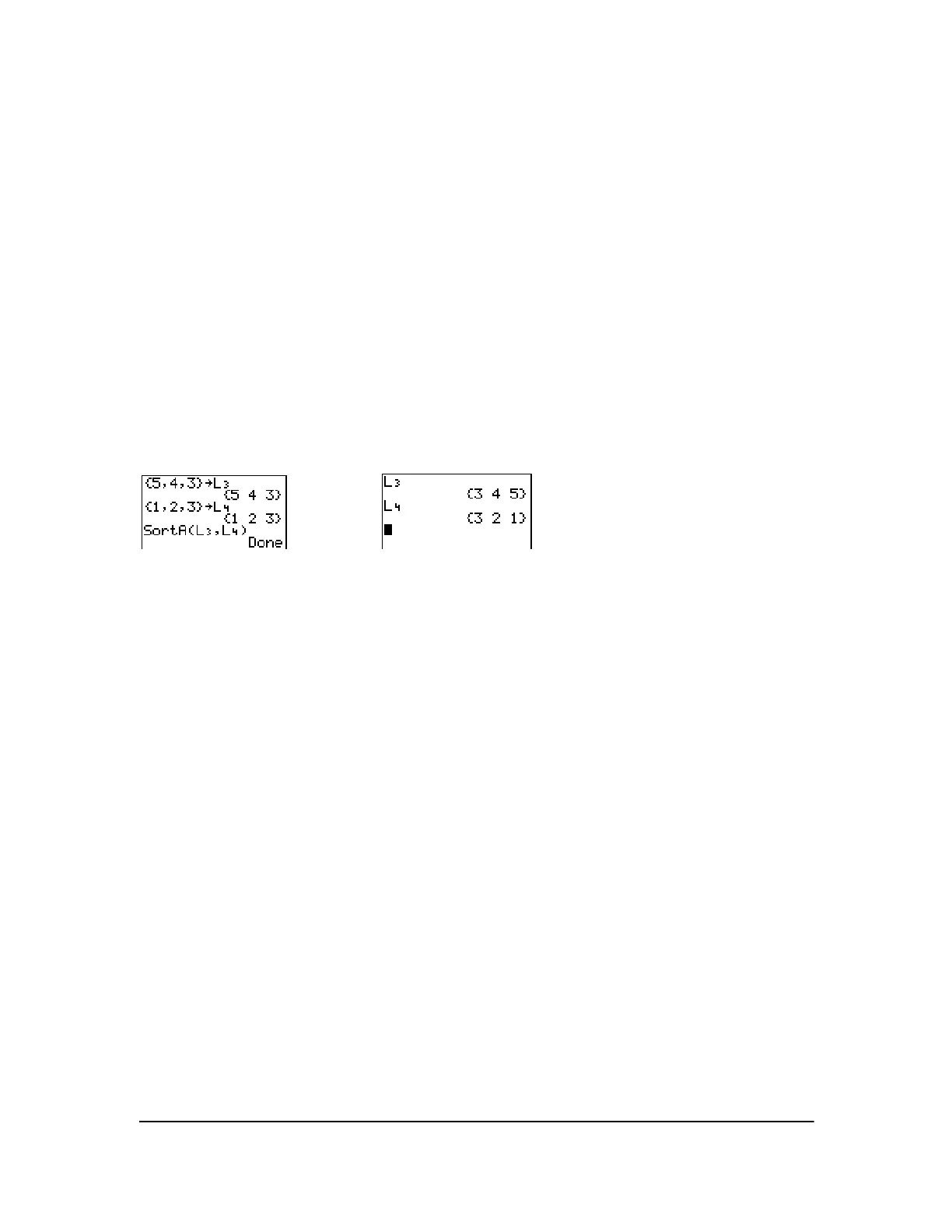Chapter 12: Statistics 194
SortA(, SortD(
SortA( (sort ascending) sorts list elements from low to high values. SortD( (sort descending) sorts
list elements from high to low values. Complex lists are sorted based on magnitude (modulus).
SortA( and SortD( each can sort in either of two ways.
• With one
listname, SortA( and SortD( sort the elements in listname and update the list in memory.
• With two or more lists,
SortA( and SortD( sort keylistname, and then sort each dependlist by
placing its elements in the same order as the corresponding elements in
keylistname. This lets
you sort two-variable data on X and keep the data pairs together. All lists must have the same
dimension.
The sorted lists are updated in memory.
SortA(listname)
SortD(listname)
SortA(keylistname,dependlist1[,dependlist2,...,dependlist n])
SortD(keylistname,dependlist1
[,dependlist2,...,dependlist n])
Note: SortA( and SortD( are the same as SortA( and SortD( on the LIST OPS menu.
ClrList
ClrList clears (deletes) from memory the elements of one or more listnames. ClrList also detaches
any formula attached to a
listname.
ClrList listname1,listname2,...,listname n
Note: To clear from memory all elements of all list names, use ClrAllLists (Chapter 18).
SetUpEditor
With
SetUpEditor you can set up the stat list editor to display one or more listnames in the order that
you specify. You can specify zero to 20
listnames.
Additionally, if you want to use
listnames which happen to be archived, the SetUp Editor will
automatically unarchive the
listnames and place them in the stat list editor at the same time.
SetUpEditor [listname1,listname2,...,listname n]

